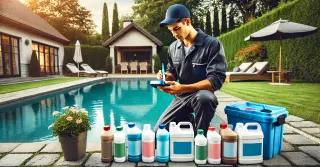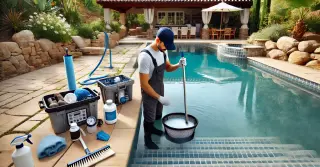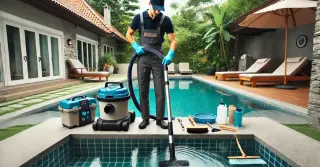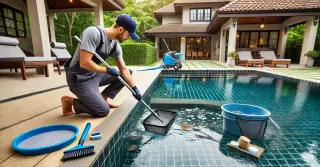Pool Chemical Balance Harrington DE

Keeping your pool's chemical balance in check is essential for a safe and enjoyable swimming experience. Correct chemical levels stop algae and bacteria growth, maintain clear, clean water, and protect the pool's surface and equipment.
- Maintaining Proper pH: The pH level of your pool water indicates its acidity or alkalinity. Optimal pH levels range from 7.2 to 7.6. If the pH is too low, the water becomes acidic, which can cause skin irritation and corrosion of pool equipment. Alkaline water from high pH causes cloudiness and scaling. Regularly testing and adjusting the pH levels is vital for swimmer comfort and safety.
- Keeping Chlorine Balanced: Chlorine plays a crucial role in pool sanitation, killing bacteria, algae, and other harmful microorganisms. Optimal chlorine levels range from 1 to 3 ppm. Insufficient chlorine results in unsanitary conditions, promoting bacteria and algae growth. High chlorine levels result in skin and eye irritation and produce a strong chlorine odor. Frequently checking and balancing chlorine levels ensures sanitation and comfort.
Balancing AlkalinityTotal alkalinity is a crucial element of pool chemistry. Alkalinity stabilizes pH levels, avoiding sudden pH changes. Proper total alkalinity levels range from 80 to 120 ppm.
- Preventing pH Swings: Proper alkalinity levels help stabilize pH levels, preventing rapid pH changes that irritate skin and damage surfaces. Low alkalinity causes pH levels to fluctuate, making it difficult to maintain a consistent balance. Excessive alkalinity results in cloudy water and scaling. Frequent alkalinity testing and adjustments is vital for a balanced and stable pool.
- Calcium Hardness Control: Calcium hardness measures the dissolved calcium in water. Optimal calcium hardness levels are between 200-400 ppm. Low calcium levels result in corrosive water, harming surfaces and equipment. If calcium levels are too high, it can cause scaling on pool surfaces and cloud the water. Regularly testing and adjusting calcium hardness is crucial for safeguarding your pool and maintaining clear water.
Using Pool Chemicals SafelyProper handling and storage of pool chemicals is vital for safety and chemical performance. Store chemicals in a cool, dry place, away from direct sunlight and out of reach of children and pets. Always follow the manufacturer's instructions for dosing and application.
- Accurate Chemical Measurement and Mixing: Precise measurement of pool chemicals is essential to maintain the proper balance. Using incorrect amounts can disturb chemical balance and water quality. Always use a clean, dry measuring tool and never mix chemicals directly with each other. If needed, mix chemicals in water as per instructions.
- Understanding Chemical Reactions: Some pool chemicals can react dangerously when mixed. For example, chlorine and acid should never be mixed. Understanding these interactions helps prevent accidents and ensures safe handling. Keep chemicals separate and handle with caution to avoid dangerous reactions.
Ensuring the right chemical balance in your pool is crucial for safety, cleanliness, and enjoyment. By frequently testing and balancing pH, chlorine, alkalinity, and calcium, you maintain optimal water conditions.
Proper chemical use and storage improve the safety and longevity of your pool.




